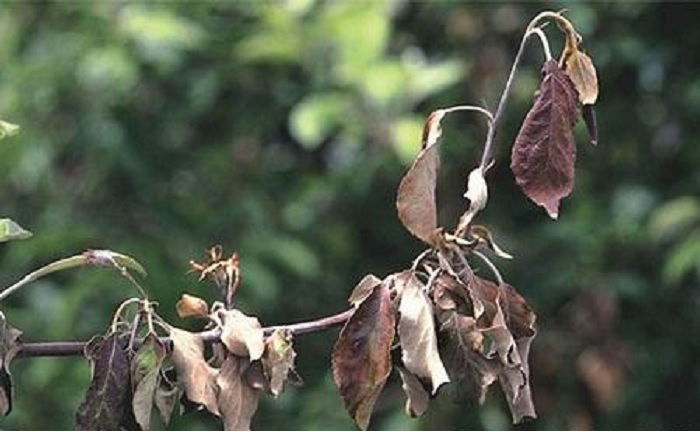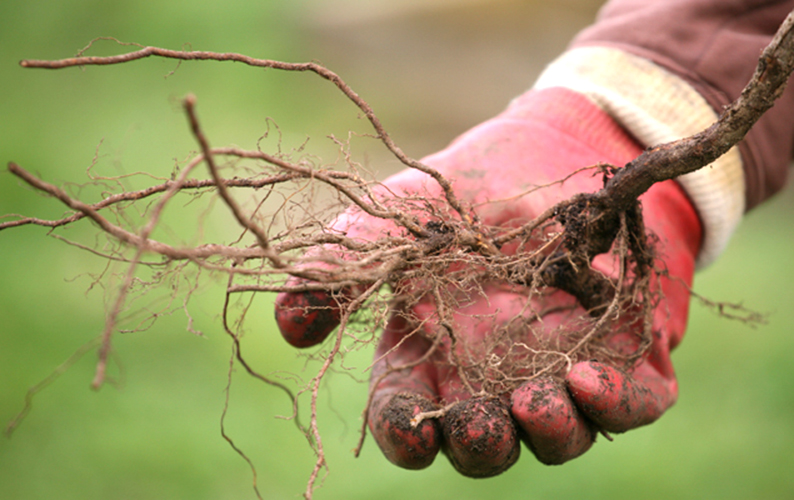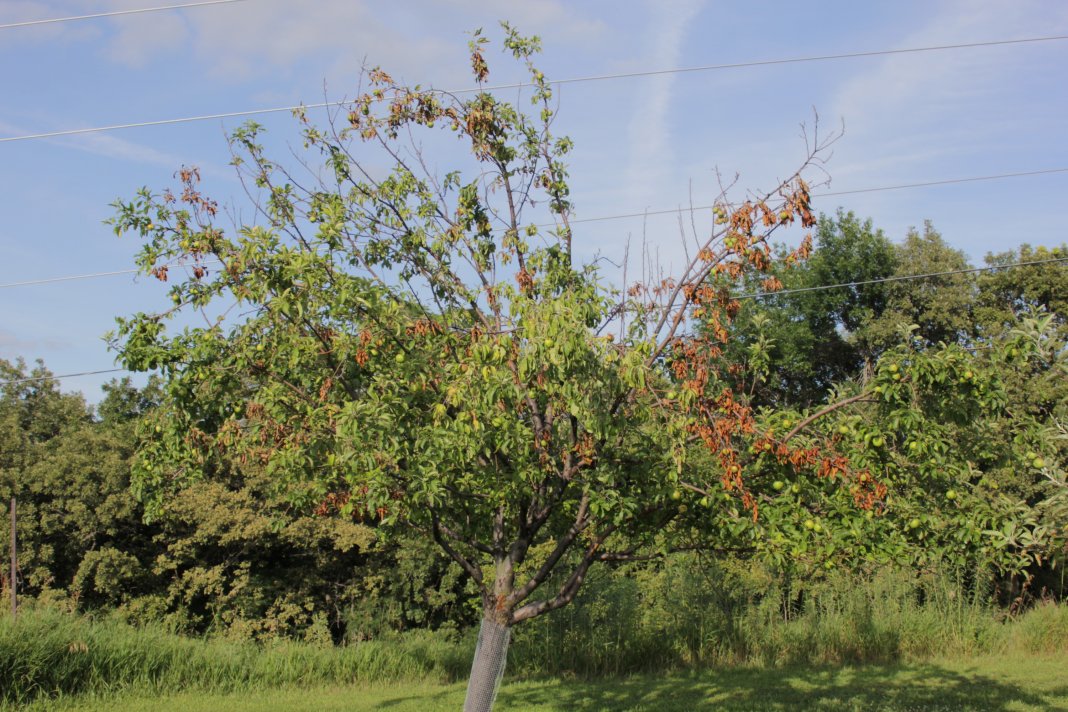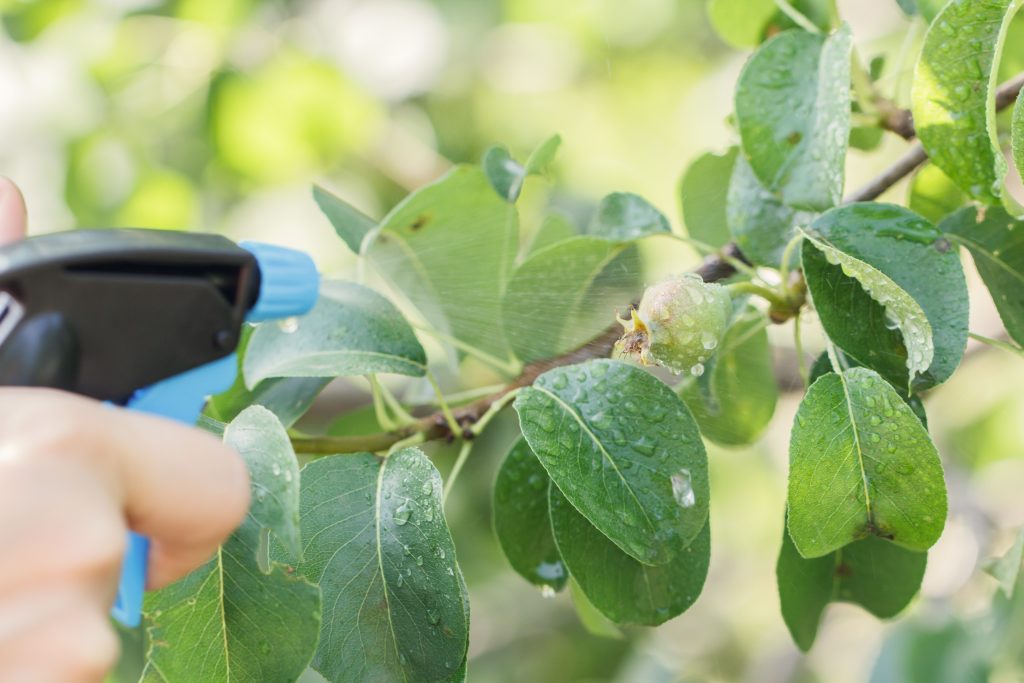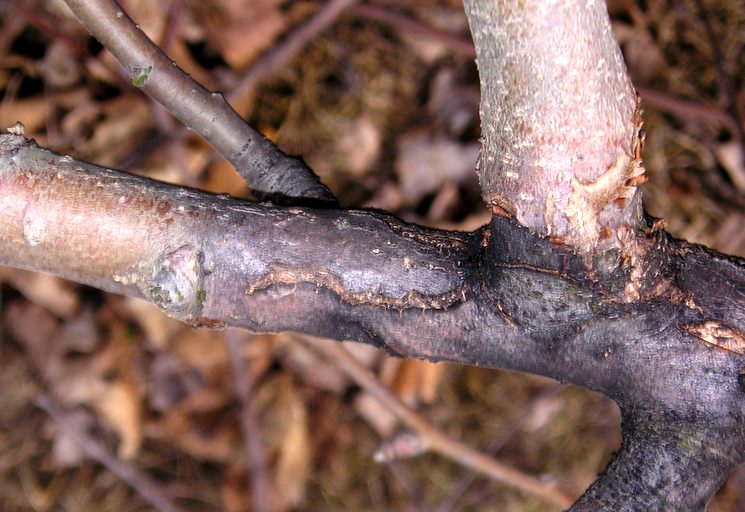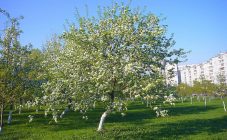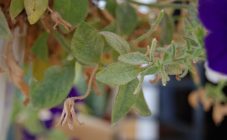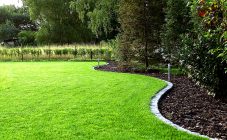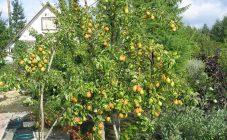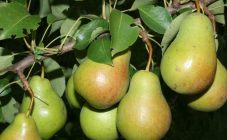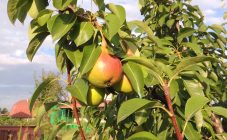Content:
The pear tree requires adherence to special care agrotechnics and temperature conditions. The most favorable areas for the cultivation of this crop are the southern regions. However, a number of breeding varieties, subject to high-quality compliance with agrotechnical recommendations, makes it possible to get a pear harvest even in the northern parts of Russia. Sometimes, despite proper care, the pear can begin to dry out. Having decided on the reason why pear branches dry, you can get rid of this problem.
List of reasons for drying pear
There is a list consisting of a number of reasons why a pear dries up, what to do in order to cure it.
Violation of farming techniques and planting
Compared to the apple tree, the pear is considered a more demanding plant in terms of cultivation techniques and planting conditions. The pear tree should be planted in an elevated area or on the top of a slope. For healthy development, pears need loose soil, permeable and air-permeable, as well as low groundwater levels. The planting plot is prepared in the fall, with uniform fertilization and careful digging. The acidified soil is neutralized with lime. The width of the planting recess for the pear is one meter, the depth is just over half a meter.
When planting in autumn, the base of the roots is at ground level, when planting in spring - 4 centimeters higher. When properly planted, a pear tree will grow and produce bountiful harvests. But, if the place where the trunk becomes part of the root system turns out to be uncovered with earth, this can lead to drying out of the pear. The root area may be open for two reasons:
- pushing the tree out due to freezing of the soil;
- improper fit.
In these two cases, the base of the root system should be sprinkled with soil.
Groundwater should not be located closer than one and a half meters. In particular, stagnant groundwater affects trees that have a rod-like root system that can penetrate more than two meters into the soil. The high standing of groundwater contributes to the violation of the air exchange regime. Small roots receive almost no oxygen, which leads to the fact that the root system begins to dry out, water does not reach the upper crown part of the pear, because of which the plant stops growing and dies.
Due to excessive acidity and salinity of the soil composition, the growth and development of planting is disrupted for 8 years. Otherwise, the tree may die immediately.
The most common mistakes gardeners make when planting pears, most often in spring, are capable of causing the plant to dry out are:
- the reason for the incorrect placement of the base of the root system;
- vaccination location error;
- refusal to create a drainage layer;
- not wide enough planting recess, leading to interlacing of the roots.
Violation of the condition of the rhizome
Often, the area of transition of the trunk to the root is taken as the site of grafting. This part of the plant should visually disappear under the ground, but not very deep. Sometimes the steady low air temperature contributes to the fact that the upper part of the root system is above the soil surface. Such deformation leads to a cessation of the growth of the pear and the termination of its ability to bear fruit. This situation can be corrected by covering the root area with earth and, if damaged areas appear, covering them with a composition consisting of a mixture of clay and manure.
Unsuitable weather conditions
The pear tree is particularly susceptible to excessive soil moisture. Drying out of small branches is considered the first sign indicating a violation of the state of the root system. Despite the fact that water is a source of nutrients for the plant, its excess can lead to the death of the planting.
Pears bloom earlier than other trees. Thus, repeated frosts can kill the young tissue of the ovaries, buds and spring pear blossom, because of which they immediately begin to turn black and wither. This is the reason that varieties intended for cultivation in the southern regions do not bloom in the regions of central Russia, despite the annual laying of flower buds.
Also, the pear can stop bearing fruit due to the impact of strong icy winds. You can prevent damage to the planting for this reason by fencing the garden with a high fence.
The appearance of pests and diseases
There are many pests and diseases that damage pear trees, stunt their growth and reduce yields. With advanced stages of the disease, plants die.
A pear can begin to dry out if it becomes infected with the following diseases:
- scab;
- powdery mildew;
- black spotted leaves;
- cytosporosis;
- moniliosis;
- brown leaf spot.
Small-sized fruits have a bland taste and dry texture. The scab can spread to a green branch, on which many spots of a gray-green hue appear. Sometimes the branch becomes covered with wounds that gradually increase in size, which can cause it to dry out and die. Fruits with scab disease become covered with dark velvet growing spots that harden and crack. Fallen leaves serve as a wintering place for fungal bacteria.
Drying of the top of the pear tree
Dry top is manifested in the drying of young growth of branches and the upper layer of the crown. This problem can be observed in the spring or summer seasons. There are four reasons for the drying out of the pear tops:
- disturbed agricultural technology;
- irrational fertilization;
- developed disease;
- the appearance of pests.
Treatment for dry top treatment
There are special treatment methods for different reasons:
- If the reason why the pear dries up from above is a violation of agricultural technology, then a number of measures will be a way to get rid of this problem, including deoxidizing the soil composition by introducing dolomite flour, planting seedlings on a raised ridge, creating drainage ditches between rows, getting rid of pests such as moles, as well as the selection of a varietal variety, the cultivation of which corresponds to the conditions of a particular garden plot where the tree will be planted;
- In the case of irrational fertilization, the method of treatment will depend on the presence or excess of a particular element. To reduce the concentration of boron in the soil, when the top of the pear seedling has dried up, you can add phosphorus and calcium. Boron deficiency is eliminated by introducing this element. Copper deficiency can be corrected with copper fertilizers. With a zinc deficiency, you can use a folk remedy - sow the necessary siderates before winter;
- The phenomenon, when the summit begins to dry out, can be caused by any disease, can be prevented by taking preventive measures, which consist in treating the garden plot with chemical-based preparations such as Topaz, Horus or Ordan. For a fire blight, antibiotics are used. However, the best measure in such a situation would be to remove and burn diseased branches;
- The tops can dry out due to the influence of pests - in this case, an insecticide, such as Aktara or Karbofos, should be sprayed into the cracks in the bark, and then the crack should be filled with cement or garden varnish.
Descending branches and drying leaves
If the branches of a pear drop and dry, and the leaves dry up, this is a symptom of a disease such as a bacterial burn. The reasons why a garden pear drops branches, and why a pear subsequently dies, are the transfer of this infection from a sick tree to a healthy one, as well as high air humidity at moderate air temperatures.
In addition, the disease can be transmitted through rainfall or insects. There are three ways to treat this disease:
- removing a diseased tree in order to prevent further spread of the disease in the garden;
- treatment with the antibiotic drug Streptomycin;
- wood processing with Bordeaux liquid.
How to reanimate a poured pear
After the winter season, the root system can become resistant. This usually leads to the fact that it begins to rot. Not all gardeners know how to properly reanimate a pear after winter before its color begins. The situation can be corrected in this case by cleaning the affected fragments of the root system, disinfecting with a solution of copper sulfate in a 1% concentration, and also covering it with garden putty.
Drying of the central trunk of the pear
The reasons for the drying out of the trunk of the pear tree, which is the central organ of this plant, may be a number of factors:
- low temperatures in the winter season;
- incorrect dosage of nitrogen fertilizer;
- the appearance of insects;
- fungal diseases;
- solar exposure;
- physical deformations;
- the appearance of rodents.
- in the presence of cracks in the spring, you should begin to clean the dry trunk of both three-year-olds and older trees with a disinfected knife;
- you can also make a furrow in the bark by making 2 millimeter cuts on it with a garden knife;
- another measure is to whitewash the trunk;
- you can protect the trunk from frost by wrapping it with newsprint;
- it is recommended to treat the tree with a solution of copper sulfate;
- also fungicidal preparations can be used to treat the trunk.
Experienced gardening tips
Gardeners with some experience in growing pear trees say that it is possible to prevent the death of a tree from drying out, possibly if a number of preventive measures are taken:
- collect and burn fallen leaves in time;
- thin out the thickened crown after flowering and fruit setting are over;
- process the root areas of the soil;
- spray the planting using Bordeaux liquid, copper oxychloride and colloidal sulfur;
- plant varieties intended for cultivation in the region, capable of surviving not only summer - hot June and July, but also low temperatures in winter.
This material listed all the reasons why the pear dries up, what to do to fix it. The pear tree can begin to dry out for a number of reasons. However, having correctly identified the symptoms of why the pear is drying out, you can eliminate any of them. By following the recommendations of professional gardeners, you can completely avoid this problem.
